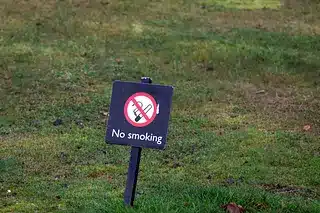A harrowing report into the death of a man whose head was crushed inside a tire press has revealed his agonizing final moments, along with dozens of safety failures at the factory where he worked.
Marshall Hunt was sucked into a McNeil Akron Bag-o-Matic tire curing press at the Hoosier Racing Tire factory in Plymouth, a small town in northern Indiana, on February 7.
‘Mr. Hunt’s head was caught in the closed press, trapped between the heat shields of the tire curing press at the neck, and employees could not open it,’ according to a nearly 800-page report from the Indiana Occupational Safety and Health Administration (IOSHA).
He died from blunt force trauma to the head and neck, according to the Marshall County Coroner.
The 30-year-old left behind his two young sons, his longtime partner and a family whose grief has been compounded by the fact his death was avoidable, according to IOSHA.
The state agency, which is responsible for enforcing OSHA rules in Indiana, uncovered a litany of failures at the plant, including an inadequate safety bar around the tire press which Hunt died on.
‘This was waiting to happen to somebody,’ Harmony Mahler, Marshall’s sister, told Daily Mail.
‘They were fined $7,000 for my brother’s death. That’s it. What motivation is there for them to have a safe environment? Everyone in that company’s life is in danger, and they don’t care because there’s no recourse,’ she said.
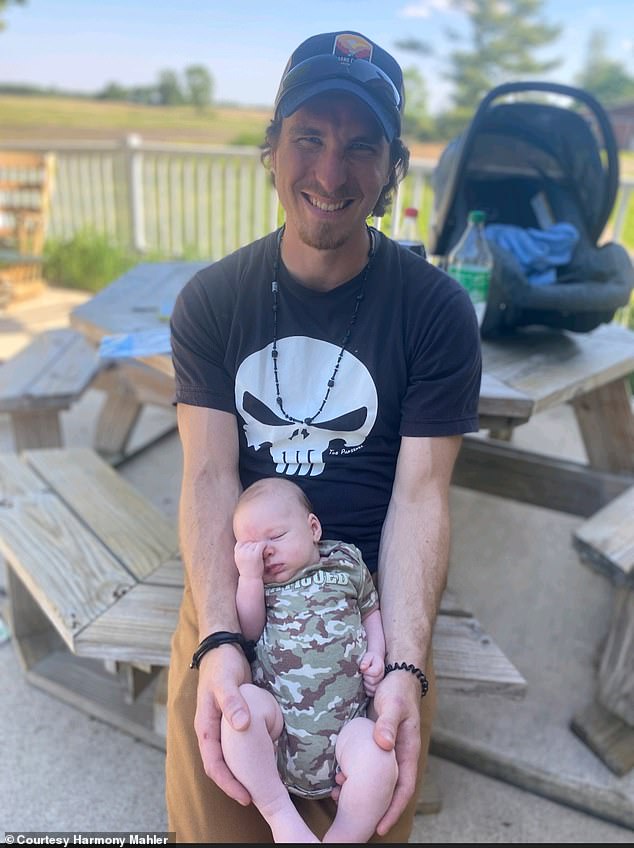
Marshall Hunt, who died in a tire press in February, is pictured holding his one-year-old son. The boy was just 10 months old when Marshall lost his life
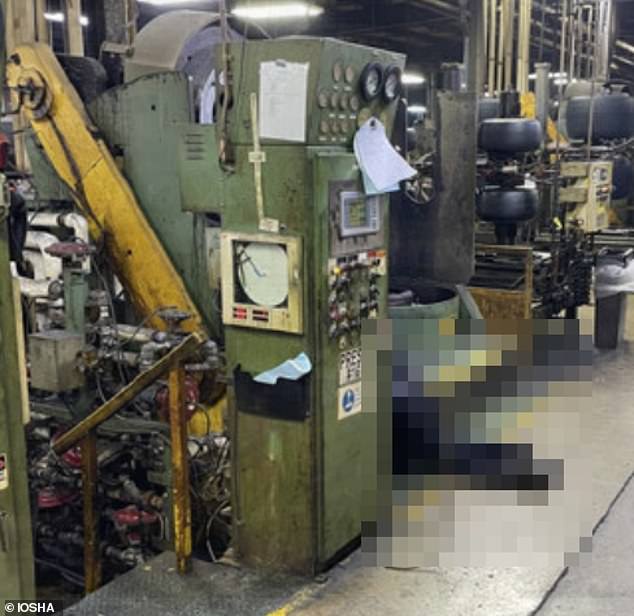
GRAPHIC: In a police photo provided to IOSHA, Marshall is seen slumped over next to the tire press after employees lifted the machine up off him
‘This is unlike any other experience I’ve gone through,’ Marshall’s brother Alexander added.
‘This is universe shattering. Everything I’ve ever known in my entire life feels inside out and flipped upside down now. And yes, it does still feel like that.’
Alexander, 35, said he was staying at his father’s house when he got the call at ‘three or four in the morning’ on the day Marshall died.
‘I pretty much collapsed to the floor,’ he said. ‘I was choking on my own words.’
A Hoosier employee named Ethan Paul Keller was the first to notice that Marshall was caught in the machine, according to a police report obtained by Daily Mail.
Keller told police he was working on a tire press in the same line as Marshall and saw him ‘slumped over the press’.
At first, Keller thought Marshall was looking at a pressure gauge, but he looked again a little while later and saw that his coworker was in the same position, according to the police report.
That’s when he went over and saw that Marshall’s head was stuck in the press, police said.
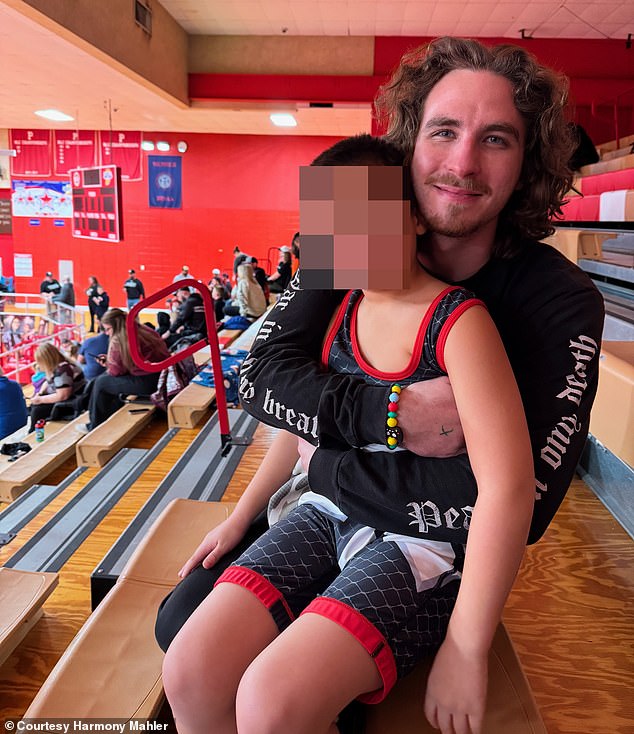
The Hoosier Racing Tire plant Marshall worked at was deemed to have dozens of unsafe machines, including the tire press that killed him (Pictured: Marshall with his seven-year-old son at the boy’s wrestling match approximately a week before he died)
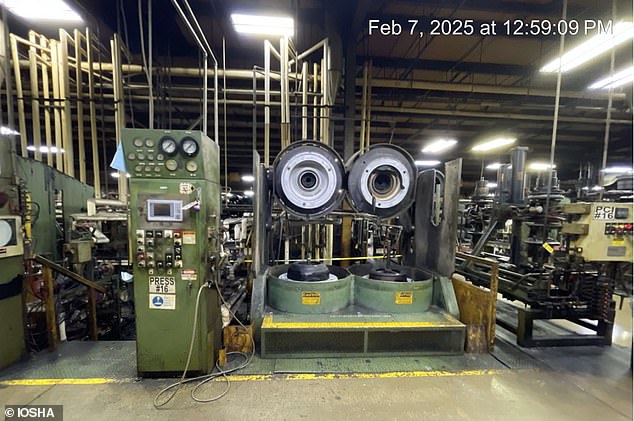
The tire press that Marshall got stuck in is pictured in the upright position hours after his death
Managers were alerted and they rushed to the area with a manual override key that can immediately lift the press in an emergency situation.
Officer Jesse Witkowski arrived on the scene shortly after the press was lifted and saw Marshall lying on the ground next to the press. He and another officer determined that he was not breathing and did not have a pulse.
Before leaving the scene, Officer Witkowski entered a break room at the factory and asked two employees who knew Marshall if he had suicidal ideation. Both employees said he did not.
The specific tire press that Marshall died on is capable of exerting pressures of 2000 pounds per square inch (PSI), according to workers interviewed by police.
The human skull can only withstand 520 pounds of force before cracking, according to a bike-helmet study published in the Journal of Neurosurgery: Pediatrics.
The tire presses at Hoosier all have a metal safety bar that automatically stops the downward close of the press when it is touched or bumped into.
However, IOSHA inspectors said it was inadequate because it didn’t fully surround the press, as multiple pictures included in the report show.
The safety bar, ‘did not prevent employees from being caught between mold halves as the top mold closed,’ the report claimed.
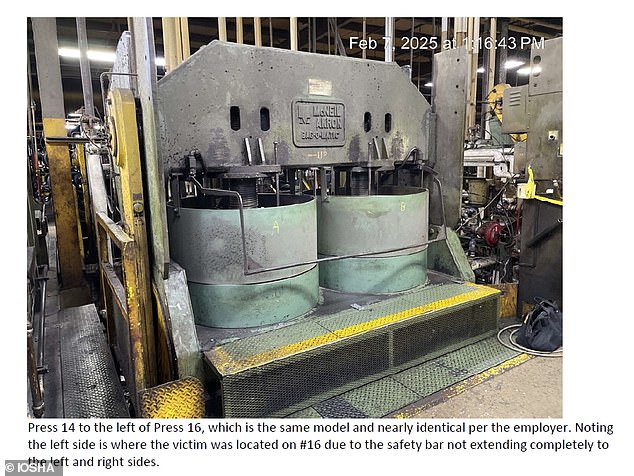
Pictured: A nearly identical tire press machine to the one that killed Marshall is shown to have a safety bar that can easily be bypassed on the left or the right
Marshall’s death did not have to happen, according to IOSHA inspectors, who said that the tire press he was operating ‘was inadequately guarded to the left and right sides of the safety bar’.
Mike Hammond, who’s been the safety manager at the Hoosier factory in Plymouth since 2013, told inspectors that Marshall was found to the left of the machine ‘where the safety bar wouldn’t have been activated,’ per the report.
Had it been activated while Marshall was operating the machine, the tire press would have stopped coming down.
This problem wasn’t unique to Marshall’s machine. IOSHA investigators concluded that 28 other tire press machines in the factory had the same fault with their safety bars.
Additionally, 30 of the factory’s post cure inflators were deemed to be unsafe due to high risks of employees getting caught in them.
Post cure inflators, typically known as PCIs, are the second step in the tire manufacturing process.
A Hoosier employee at the Plymouth factory had their thumbs crushed in one of the PCIs on October 31, 2024, according to the IOSHA report.
The incident didn’t result in the worker being hospitalized, but on a February 10 walkthrough — three days after Marshall’s death — inspectors pointed out several problems with the PCIs at the factory.
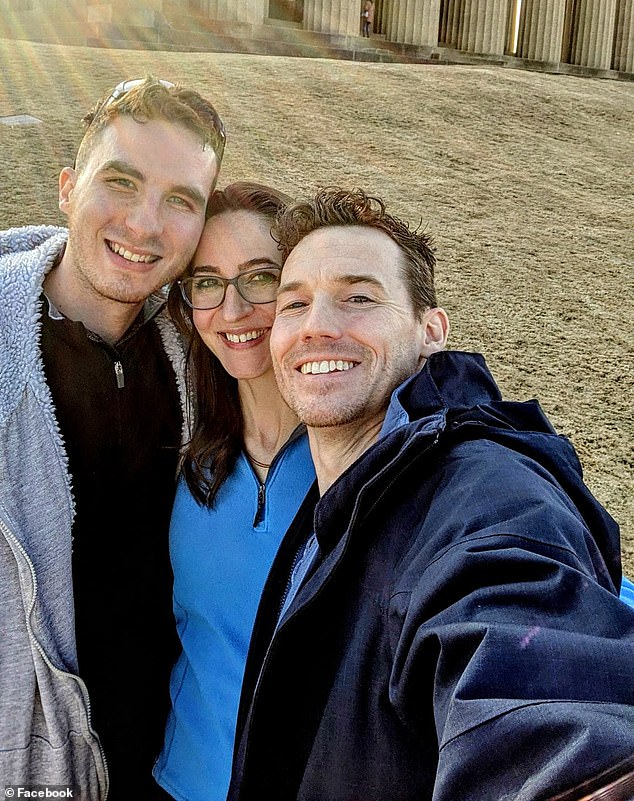
Marshall (left) is pictured with his sister Harmony and her husband, Matthew Mahler
‘The PCIs have no guarding at their pinch points and no barrier guards for their rotation,’ said the report.
And according to interviews conducted by the inspectors, no modifications were made to the PCIs in months after the worker injured their thumbs in the machine.
As Marshall’s family tries to pick up the pieces, Harmony decried Indiana laws that largely put a damper on negligence lawsuits against companies.
The Indiana Workers’ Compensation Act, for example, makes it so that employees are heavily restricted from suing their employer for injuries sustained while on the job, even if it can be proven that the employer was negligent.
Instead, employees are required to go through the workers’ compensation system to get payouts. Families trying to get death benefits for a worker’s dependents are bound by the same constraints.
Every other US state has these restrictions, which exist to streamline the process for compensating employees by preventing protracted lawsuits.
In Indiana, there’s a chance you can sue your employer if they intentionally hurt you or if provably committed a criminal act.
‘If I cannot get them in a court of law, I will get them in the court of public opinion,’ Harmony said, referring to Hoosier.
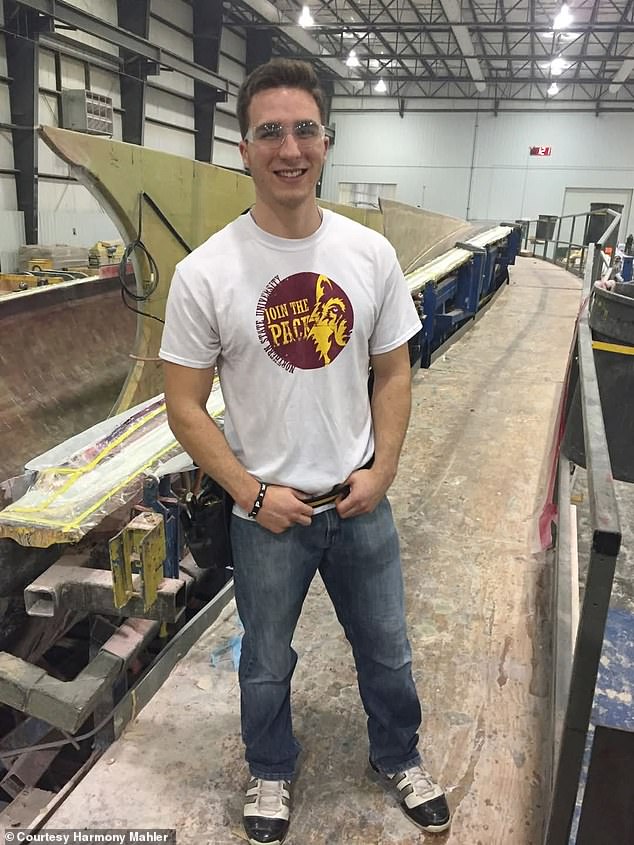
In the case of Marshall’s death, IOSHA fined Hoosier $7,000 on May 6. The company decided to contest this on May 14, according to public records
Even before an employee’s thumbs were injured, Hoosier was the subject of two IOSHA investigations, one that began in December 2021 and another in April 2022.
Both probes found ‘serious’ safety violations, with IOSHA fining Hoosier $4,500 for each transgression.
The agency said Hoosier was not in compliance with a federal standard called ‘general requirements for all machines’ in both instances.
This rule stipulates that all machines in American workplaces need to be guarded by ‘one or more methods’ to protect ‘the operator and other employees in the machine area.’
The machines Marshall worked on lacked multiple safety measures, according to the IOSHA report.
In the case of Marshall’s death, IOSHA fined Hoosier $7,000 on May 6. The company decided to contest this on May 14, according to public records.
Daily Mail approached Hoosier for comment about the nearly 60 machines at the Plymouth factory that were deemed to be severely lacking in proper guarding.
Daily Mail also asked about the factory’s prior lapses in safety that have been documented by IOSHA inquiries and whether any changes have been made since Marshall’s death. The company has not responded.
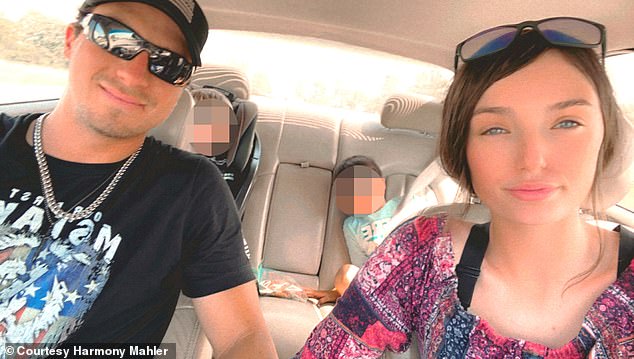
Marshall is pictured in the car with his girlfriend Lexi and his children
Marshall’s brother, Alexander, recalled the shattering moment he was informed of his death. He was working the night shift as a delivery driver for Pizza Hut, so he happened to still be awake.
‘I don’t recall when exactly I got the call, but it was his girlfriend, Lexi,’ he said, recalling his unease at being contacted so early in the morning.
‘It was Lexi’s mom actually on her phone, and she broke the news to me. She just told me, “Your brother had an accident working. He’s not with us anymore.” And I heard a bunch of first responders in the background,’ he said.
Eventually, one of the first responders got on the phone with him so they could begin making funeral arrangements. All of this being thrown at Alexander so suddenly was too much for him, he said.
‘I kind of went into shock and just told them, I’ll give you his details. Just give me a little bit. And I got off the phone and went from there. I woke my dad up and I told him Marshall’s dead,’ he said.
His father was able to remain level headed but Alexander admitted that he ‘did not take it well at all.’
Marshall also had big plans with girlfriend Lexi that were tragically cut short, according to Alexander.
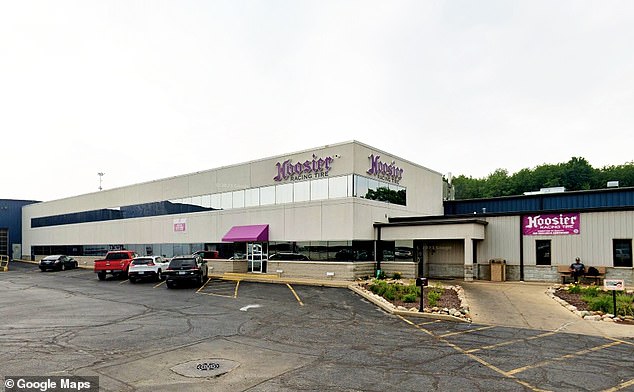
Daily Mail approached Hoosier for comment about the nearly 60 machines at the Plymouth factory (pictured) that were deemed to be severely lacking in proper guarding by IOSHA. The company did not respond
‘He was going to marry Lexi in a few more months,’ Alexander said. ‘He was actually going to move into a home that I own in Arkansas.’
‘He and Lexi were planning to move there as soon as he was able to,’ he added. ‘And once he got there, got a job, and got settled in back in that town, that’s when he was gonna ask her to marry him.’
Alexander only recently told Lexi this, since in the immediate aftermath, he didn’t feel it was the right time to share it with her.
‘She had a hard time coming with words,’ he said of her reaction. She sat there quietly for a minute or two, he said, which prompted him to lighten the tension.
‘I was like, “would it have been a yes or a no?” And I did get her to laugh. She said, “of course it would have been a yes.”‘
Alexander said he and his brother had a strong bond. One of the things he’ll miss the most about him are the talks they used to have.
‘One of the things that really got to me the most when he was gone was — he and I, when we were together, just two of us, and just talking on long drives or whatever — I could have conversations with him that I just cannot have with anybody else in this world,’ he explained.
‘Like very deep conversations where no one else can really understand what we’re talking about. He and I could. Only with each other.’








